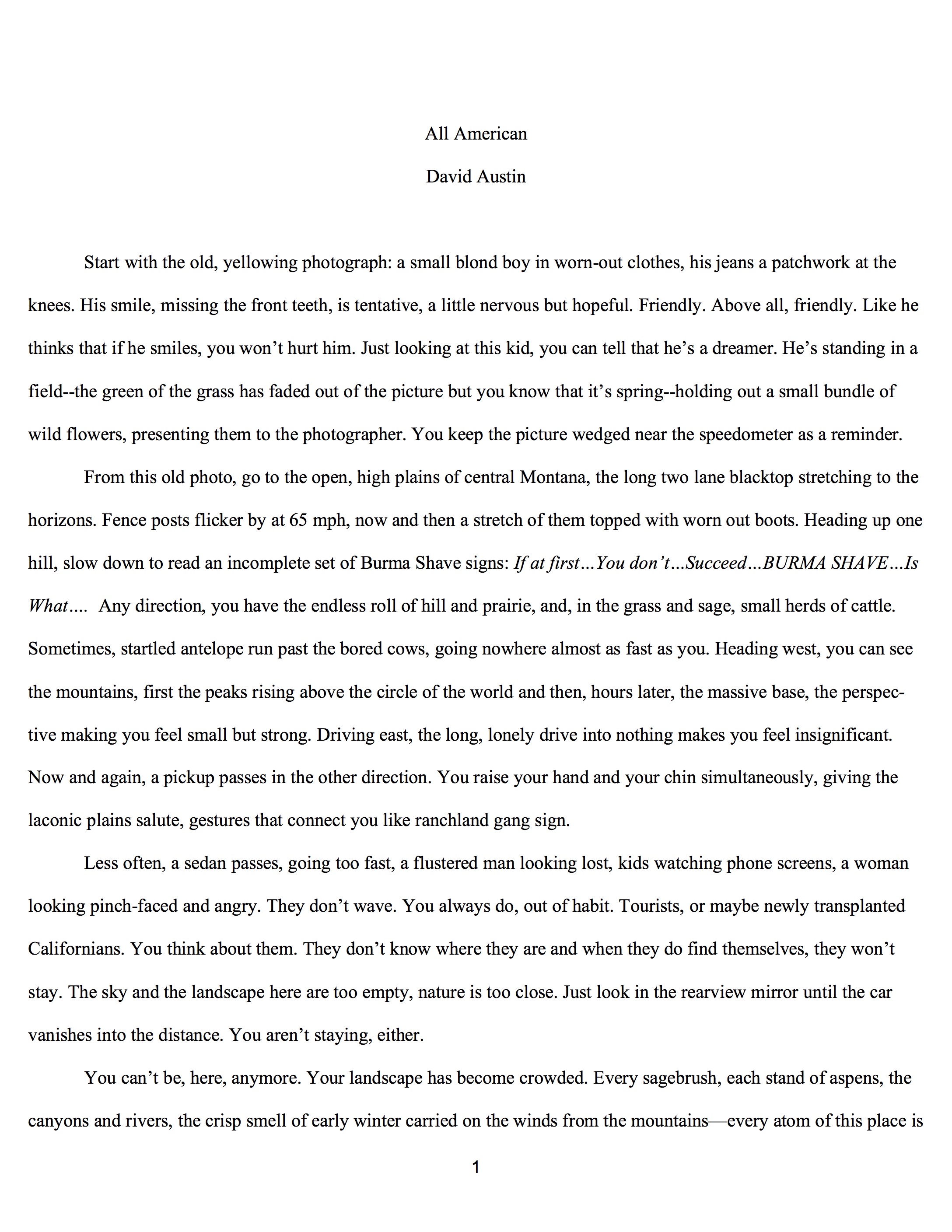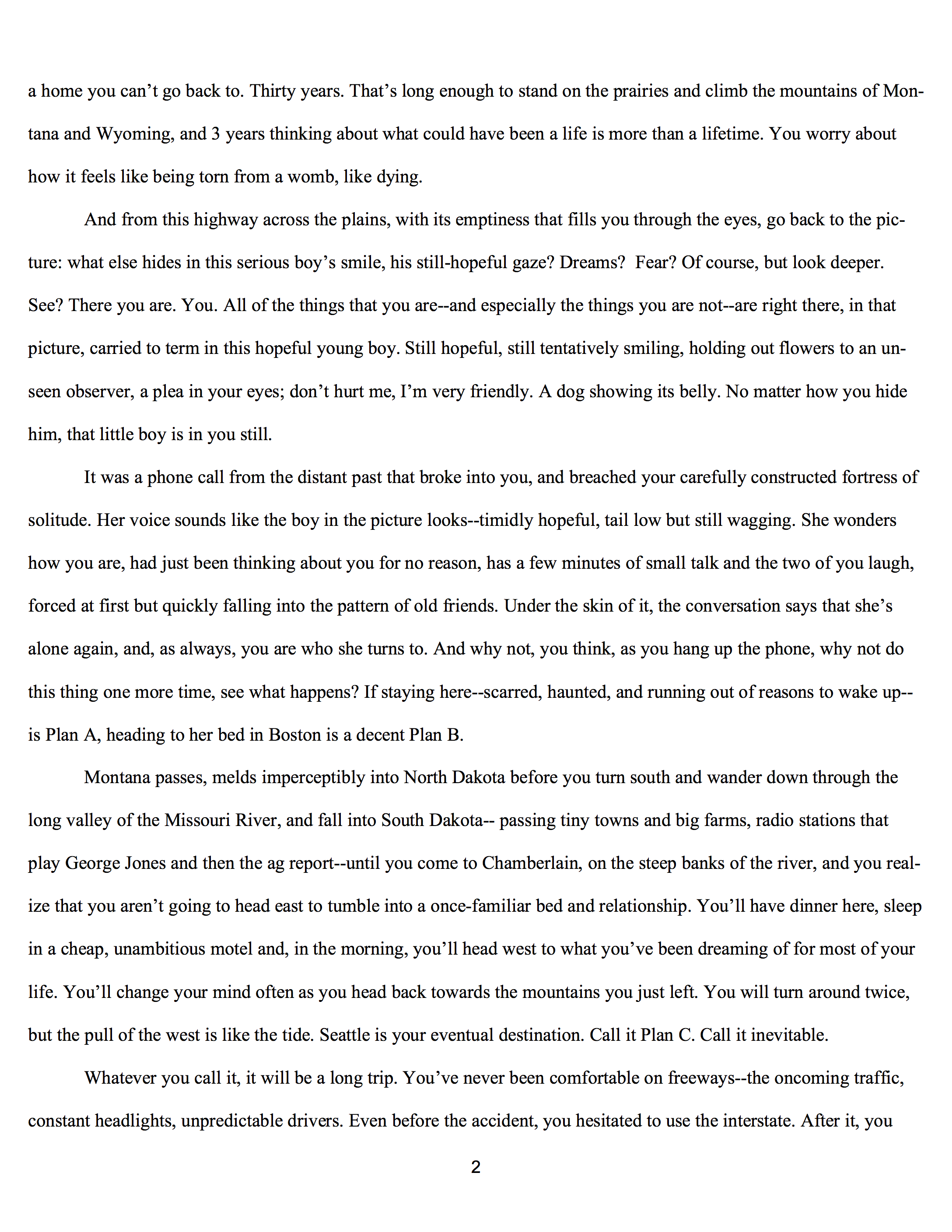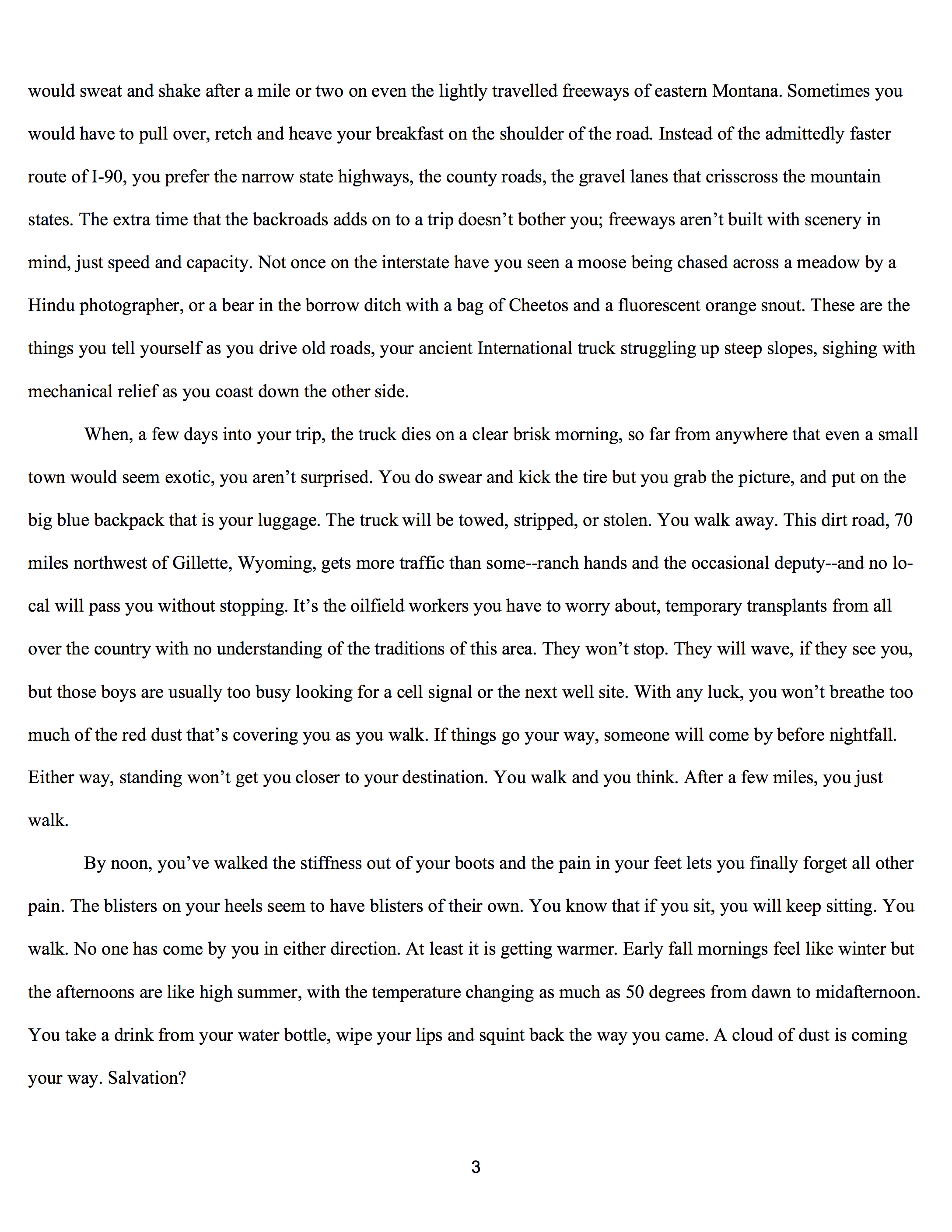In episode 126, I talk with my friend and fellow Story Grid editor Anne Hawley about second person point of view in the context of David Austin's short story "All American." We discuss why you might want to experiment with this point of view, even if it's not right for your story.
Listen to the Writership Podcast
Second Person Point of View
The important thing to understand about any point of view choice is that it's not just a grammatical construct, and that's not a useful way to make your point of view choice. Think about it this way: When you choose a point of view character or narrator, you answer the question, who should tell this story? When you choose the specific point of view, you're answering the question, how should the character or narrator tell the story?
If you think of point of view like a camera's view finder, you're on the right track, but goes deeper because certain choices when combined with other writing tools, allow the reader to slip into the character's skin or view the scene from far away in time and space.
Many new writers are discouraged from using second person. It has its disadvantages, like any point of view choice, and is tricky to pull off. But when executed well and in the right circumstances, it produces a beautiful effect. So why might you choose to use this much maligned point of view?
Advantages
● Immediacy. Even when the story is about something that happened in the distant past, the reader is so close to the character, and the events and setting can feel like reliving rather retelling. When it works, it allows the reader true immersion in the story experience to the extent that they might dissolve into the character.
● Sensory Details. A rich sensory experience can be created with any choice, but the immersion effect transforms something like a black and white film to technicolor.
● Persuasion. This POV has a hypnotic quality that works subliminally and is especially powerful when the character is trying to convince themselves or someone else of some Truth.
● Direct Attention. Even as the POV has a hypnotic feel, you can guide the reader's focus more directly. Instead of seeing only the landscape of the setting, the reader is drawn where the narator sends them.
● Intense. Again, you can create an intense experience with any POV, but the immersion experience kicks this up a notch or two.
Disadvantages
That's what you can gain, but what might you lose?
● Alienation. Some readers don't like the directness of this POV.
● Rigid Narrative Distance. Second person lacks the flexibility of other POVs to gain more narrative distance.
● Reader’s Resistance. Most readers would rather observe unsavory characters from a distance and not slip into their skin.
● Core Emotion. More generally, readers experience the story's Core emotion with a protective frame. Dissolving that frame can make them feel uncomfortable.
● Instructions.This POV can feel like the directions in a how-to book.
How can you evaluate your choice?
“Point of View in Fiction: The Development of a Critical Concept” by Norman Friedman
Norman Friedman described different variables involved in point of view, and we've added a final question. We'll apply it to our submission from the podcast. (Listen to the episode for a more in-depth discussion of the questions.)
● Who is telling the story or talking to the reader? In "All American" the character-narrator is telling the story to you.
● From what position or angle regarding the story? The character narrator is in the middle of the story, and wants the reader to be there too.
● From what vantage point in time and space relative to the events of the story (near, far, shifting)? Sometime time in the future, though it's not clear from the first half of the story when exactly.
● Through which channels of information do we learn about mental states, setting, situation, character? We receive information through the author’s words and the character-narrator's words, actions, thoughts, perceptions, and feelings. We have almost total access within the confines of the character-narrator's direction.
● What is the balance of telling and showing? The balance weighs in favor of showing, and everything the character-narrator tells us is woven into sensory experience.
● Why is the character-narrator telling the story? The character seems to be seeking buy-in or absolution. It’s as if he’s trying to convince the reader that they would do what he had done in these circumstances.
Editorial Mission—What Would You Do?
Rewrite a scene from your work in progress in second person point of view. This is a challenging POV to write in, so do the best you can. View it as an experiment. Read what you write and answer Friedman’s questions.
● Who is telling the story or talking to the reader?
● From what position or angle regarding the story (above, periphery, in front, center, shifting)?
● From what vantage point in time and space relative to the events of the story (near, far, shifting)?
● Through which channels of information do we learn about mental states, setting, situation, character?
● What is the balance of telling vs. showing in the story?
● Why is the narrator telling the story?
What do you notice about the POV you’ve chosen by comparison?
Wise Words on Point of View
“Second-person narration is rare. On one hand, like first-person narration, it has an intimate feeling. On the other hand, while the intimacy of first-person narration is that of storytelling, the intimacy of second-person narration is that of telepathy: the book is... directly telling you what you think or feel ...
You’ll usually find second person narrative keeping close company with Present Tense Narrative, to reinforce the impression that this isn’t just happening to you, but it’s happening to you right now.
If you look hard enough, you will discover indications that the second-person narrator is not supposed to be You, the Reader. [This causes You the Reader to wonder] why the author ... would dare try to make you identify that intimately with a second-person narrator who is, um, not you.
”
The Submission




After a career in public service during which she wrote fiction to stay sane, Anne Hawley has turned her talents to writing professionally.
As a founding member of the Super Hardcore Editing Group and a graduate of Shawn Coyne’s Story Grid Workshop, she writes and edits from her small house in Portland, Oregon. When she leaves the house it’s usually on her Dutch bike, Eleanor.
Her new novel, Restraint, is a sweeping historical love story about a gifted and sexually repressed artist in Regency London. Under the dangerous gaze of high society, he must deny his attraction to the young nobleman who has hired him to paint his portrait, or else risk his livelihood and his reputation by giving in to his secret desires. It's Pride and Prejudice meets Brokeback Mountain in a bittersweet story of two men who fall in love in a time and place where homosexuality is still a capital offense. Find out more here.
Mentioned on the Show
Norman Friedman wrote about literary theory and criticism last century, and though he's not mentioned often these days, his work is a treasure trove of smart thinking on story structure and execution. His articles aren't easy reads, but if you are willing to spend some time with them, you'll deepen your understanding of the writing craft. The questions for this episode are from "Point of View in Fiction: The Development of a Critical Concept," originally published in PMLA, a journal of hte Modern Language Association of America. You can find the article online here.
In this post, Emma Darwin discusses how to move point of view, and if you scroll halfway down the page, you'll find a section on the three ways that second person point of view can be used.
The balance of showing and telling are relevant to analyzing the point of view of your story. If you need help telling these two modes of storytelling apart or need to understand when to use to use them, this post, also from Emma Darwin, will help you on your way.
This post from Chuffed Buff Books contains great examples of second person point of view.
7 Day Scene Intensive
Scenes aren’t the whole story when it comes to writing fiction or narrative nonfiction, but mastering scenes is the most efficient way to become a better storyteller because you internalize macro story structure within the smallest complete unit of story. The 7 Day Scene Intensive is designed to help you master scenes with information, practice, and a quick feedback loop of supportive, specific feedback, similar to what we offer on the podcast.
The 7 Day Scene Intensive is online May 27–June 2, 2018, so there's no travel involved. Because we offer individualized feedback each day for seven days, we're limiting the intensive to two participants. If your story isn't where you want it to be, this might be just what you need. You can find the details here.
The Writership Index
Listeners have asked for an index of the podcast episodes and the topics discussed, so we've put together a Google spreadsheet containing details of each episode, its airdate, author name, story title, genre, story type, published location, author website, and topics discussed. Get access to the spreadsheet here.
Join the Writership Book Club!
Join the Writership Quarter Masters Book Club! Each month I'll choose a book from your suggestions. We'll read it and, together in a (virtual) book club meeting, analyze it the way I would for a Story Grid Diagnostic.
In April we're reading The Curious Incident of the Dog in Night-Time by Mark Haddon. Join now so you'll be in the group for this month's book announcement. For more information, visit our Patreon page.
The Sell More Books Show Summit
Jim Kukral of the Author Marketing Club and the Sell More Books Show is doing another big conference. This time in Chicago in May of 2018. It's called the Sell More Books Show Summit and you can learn more and get a ticket here.
Join 175 other writers and publishing friends for this interactive, two-day conference and networking event in Chicago! Eat, drink and learn together, and be on your way to building a stronger and more profitable career as an author.
Only 175 seats are available. Click here to grab your ticket.
Image courtesy of getstencil.com and punsayaporn/bigstock.com.


